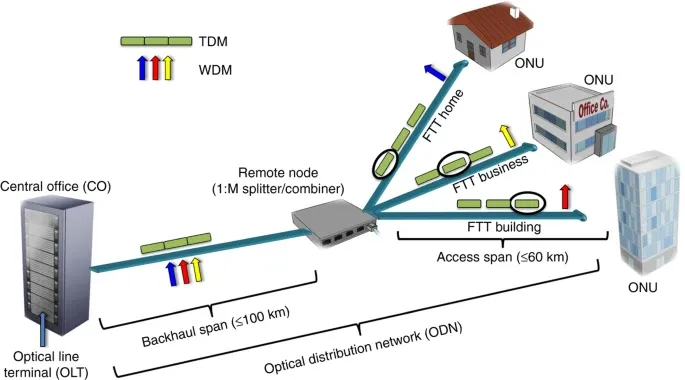How Fiber Security Helps Prevent Unauthorized Access and Boosts Surveillance
How Fiber Security Helps Prevent Unauthorized Access and Boosts Surveillance
Blog Article
The Ultimate Overview to Fiber Optic Security Systems for Your Service
In a period where security issues are extremely important for services, recognizing the complexities of fiber optic technology can be transformative. This guide outlines how incorporating fiber optic safety and security systems not just boosts information protection yet also provides advantages like resistance to interference and real-time surveillance capacities.
Understanding Fiber Optic Modern Technology

The core of a fiber optic cord is composed of a thin glass or plastic facility, bordered by a cladding layer that reflects light back right into the core. Single-mode fibers are made for long-distance transmission, while multi-mode fibers are appropriate for much shorter ranges, commonly used within structures.
Fiber optics are not only quicker but also extra safe and secure than standard wiring. Their fundamental resistance to electro-magnetic disturbance and the trouble of using the signal without detection make them a preferred selection for organizations focusing on information integrity and safety and security. As organizations significantly count on safe and secure and reliable interaction systems, understanding fiber optic innovation becomes important for educated decision-making.
Trick Benefits of Fiber Optic Security
When thinking about safety options for an organization, the advantages of fiber optic systems are particularly compelling. Fiber optic technology offers extraordinary data transmission speeds and data transfer ability, making it optimal for dealing with high-resolution video clip feeds from surveillance electronic cameras. This ability ensures that safety personnel obtain real-time data, boosting overall reaction times to potential protection threats.
Furthermore, fiber optic cables are inherently immune to electromagnetic interference, which can compromise the integrity of traditional copper-based systems. This resistance guarantees that the information transmitted remains safe and secure and uninterrupted, giving a more trustworthy security facilities. Additionally, fiber optics are less vulnerable to physical damages, as they are made from glass as opposed to steel, lowering maintenance prices and downtime.
An additional considerable benefit is the enhanced scalability of fiber optic systems. As business requirements progress, fiber networks can be conveniently increased to accommodate added safety devices without significant overhauls to the existing infrastructure. Finally, fiber optic systems use improved cybersecurity attributes, including encryption capacities that secure sensitive information from unapproved gain access to. Collectively, these benefits make fiber optic safety and security systems a robust selection for companies seeking to enhance their safety and security measures.
Setup Process and Factors To Consider
Thinking about the complexities entailed, the installation process of fiber optic safety systems requires cautious planning and implementation. The first step involves an extensive website analysis to recognize optimum areas for cabling and tools. This assessment needs to think about ecological aspects, existing framework, and potential susceptabilities.

Additionally, the installation needs to follow neighborhood building regulations and market standards. This might consist of collaborating with different stakeholders such as structure managers, IT teams, and protection employees to make sure smooth integration with existing systems.
Post-installation, strenuous screening is essential to confirm system efficiency and identify any problems that may emerge. By prioritizing these considerations throughout the setup process, services can ensure a durable and effective fiber optic safety and security system that satisfies their specific protection demands.
Most Current Developments in Fiber Optic Safety And Security
Current advancements in fiber optic modern technology useful link have actually substantially improved the capabilities of safety and security systems for services. One of the most significant developments is the combination of fiber optic sensors that can identify vibrations and intrusions along the boundary of a center. These sensors provide real-time monitoring, enabling fast response to prospective violations.
Furthermore, the growth of distributed fiber optic noticing innovation permits the continual tracking of large areas with a single fiber cord. This approach not only reduces setup expenses however likewise enhances the reliability of keeping track of systems by getting rid of the need for numerous, different sensing units.
Furthermore, innovations in multiplexing strategies have enabled businesses to send vast quantities of data over fiber optic networks, improving the capacities of video monitoring systems. High-def video feeds can now be sent over lengthy ranges without loss of quality, guaranteeing that safety and security personnel have accessibility to clear and workable info.
Lastly, making use of fabricated intelligence (AI) along with fiber optic systems is revolutionizing threat detection. AI algorithms can evaluate data from fiber optic networks to determine uncommon patterns or behaviors, enabling proactive protection actions. These innovations jointly represent a considerable jump ahead in fiber optic safety and security technology.
Selecting the Right System for Your Business
Choosing the proper fiber optic safety and security system for your company is critical for making sure ideal defense and satisfaction. To make an informed choice, examine your certain safety needs, considering elements such as the size of your facilities, the nature of your operations, and prospective susceptabilities.
Begin by assessing the level of protection needed; as an example, high-risk settings might demand advanced systems with integrated monitoring and breach discovery capabilities. Next off, consider scalability; as your service expands, your protection system should be capable of broadening to accommodate increased demands without considerable overhauls.
Additionally, explore the reliability and performance of numerous systems. Seek suppliers with well-known credibilities and consumer testimonials that testify to their service top quality. It's likewise recommended to make inquiries about the innovation's compatibility with existing infrastructure, guaranteeing a seamless assimilation procedure.
Verdict
In conclusion, fiber optic protection systems provide a durable remedy for enhancing organization protection facilities. The combination of high-speed data transmission, resistance to electromagnetic interference, and progressed tracking capacities significantly enhances total protection (fiber optic security system). By understanding the modern technology, identifying its advantages, and thinking about the installment procedure, anchor organizations can make informed choices. look at this site The current innovations even more reinforce the efficiency of these systems, ensuring that businesses continue to be safe and versatile in an ever-evolving risk landscape.
Report this page